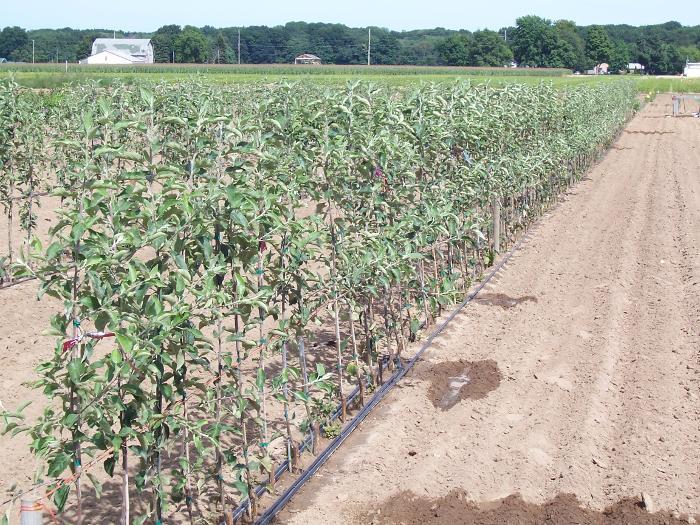Nursery- Doing your own

Nursery- Doing your own
Sometimes propagating your own fruit trees is the only option!
Depending on the varieties and/or rootstocks you wish to have for your orchard, the only option to get them may be to propagate your own. We don’t often recommend doing this if bareroot trees can be found at a commercial nursery because usually those trees will be of better quality and larger than ones “homegrown”. But, if you are concentrating on growing heirloom, cider, or old strains of conventional varieties then propagating them in your own nursery may be the only alternative.
There are several important steps to consider before establishing a home nursery. For the most part, home propagation of apple and pear are relatively easy. Stone fruits are more difficult for the novice to propagate.
First is the real need to do so! If you cannot find what you want in suitable variety/rootstock combo then grow your own.
Secondly is the quality factor. You may save some money by growing your own, but often I believe it is a misconception. Professionally grown trees, while, more expensive in the short run, may be more economical in the long run. They are almost always bigger and or better quality than homegrown. They are usually propagated from more true-to-name varieties and with better scionwood. The will often establish in the orchard faster and come into production sooner. I have seen most homegrown nursery trees to be smaller caliper and may often take another year to finish off to transplant size.
Third, if you are considering growing very high density orchards, then there may be some economic benefit. One can often establish a high density apple orchard with smaller and shorter whip trees.
Fourth, is propagation method. For apples and pears, bench grafting is one of the most popular methods. It is easy to learn, quite successful, and can be done in the off-season winter when there is less outside work pressure. Budding is another excellent method with chip budding being the predominant graft. However, it is usually reserved for late summer onto already established rootstocks in the field. For bench grafting there are various tools which can be used. Besides knives which are harder to learn and less safe to use, there are the Scionon® grafting tools which allow untrained people to learn how to graft rapidly and successfully.
Many bench grafted trees can be grown to small sizes in one summer season. For larger trees, two summer seasons may be necessary. For budded trees, decent trees can be grown the summer following budding.
Fifth, choose your rootstocks and order EARLY! Often the rootstock nurseries sell out quickly and by springtime there may be no availability. Think ahead and order a season ahead if possible. For Geneva® rootstocks this is especially important as they sell out almost immediately and many growers have themselves on the list well ahead for them.
Sixth is choosing quality scionwood. Every step in the propagation process is vitally important, but quality scionwood is probably the most important factor. If virus certified scionwood is available from a source, choose it if possible. If not, then make sure the trees you select it from are very healthy and if possible screened for any potential pathogenic viruses. Virus is easily transmitted by grafting and once infected trees never get rid of it. Some viruses are more dangerous and pathogenic than others. Some do not cause much problem. But, starting clean and staying clean from virus issues will pay in the long run.
Seventh is choosing your nursery field. With almost every nursery, unless you are doing trees in the greenhouse, you have to grow and finish them outdoors. Choose a quality field. Prepare the ground properly. Check pH and fertility and adjust to make sure it will grow good trees. Choose a field that will allow for easy digging and harvesting of the trees--- muddy fields in the fall are no fun!
Eight is deciding to fall plant or spring plant. If you grow your own and are able to fall plant directly into the orchard setting, then fall planting is a great option. One can usually fall plant through November in northern areas as long as the ground is tilable and not frozen. Make sure that the trees are not too “green” or have too much soft fleshy growth.
You can also fall dig and store the bareroot trees healed-in a protected building or location, or stored bareroot in a cold storage. If cold stored, you must be knowledgeable about properly storing trees and be very vigilant when doing so. Even the commercial nurseries who fall dig and store can have issues in the storage if something goes wrong.
Spring digging is good if your schedule does not allow for fall planting. We recommend digging and transplanting into the orchard as soon in the spring as frost is totally out of the ground and trees are still dormant. Don’t wait until dormancy breaks or you will loose potential growth through the summer.
Nineth is reviewing and evaluating the success of your home-grown nursery. Was it really worth it? Did you save money? Did the trees grow well in the orchard?